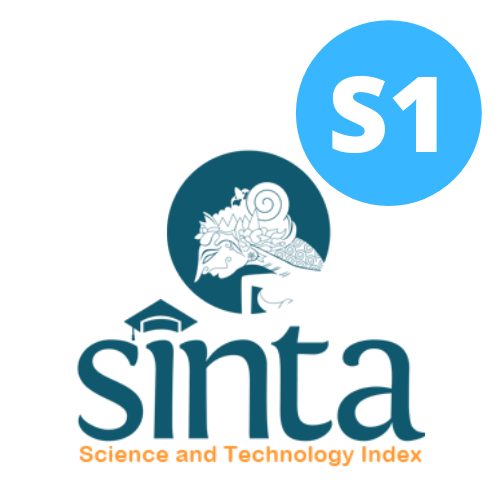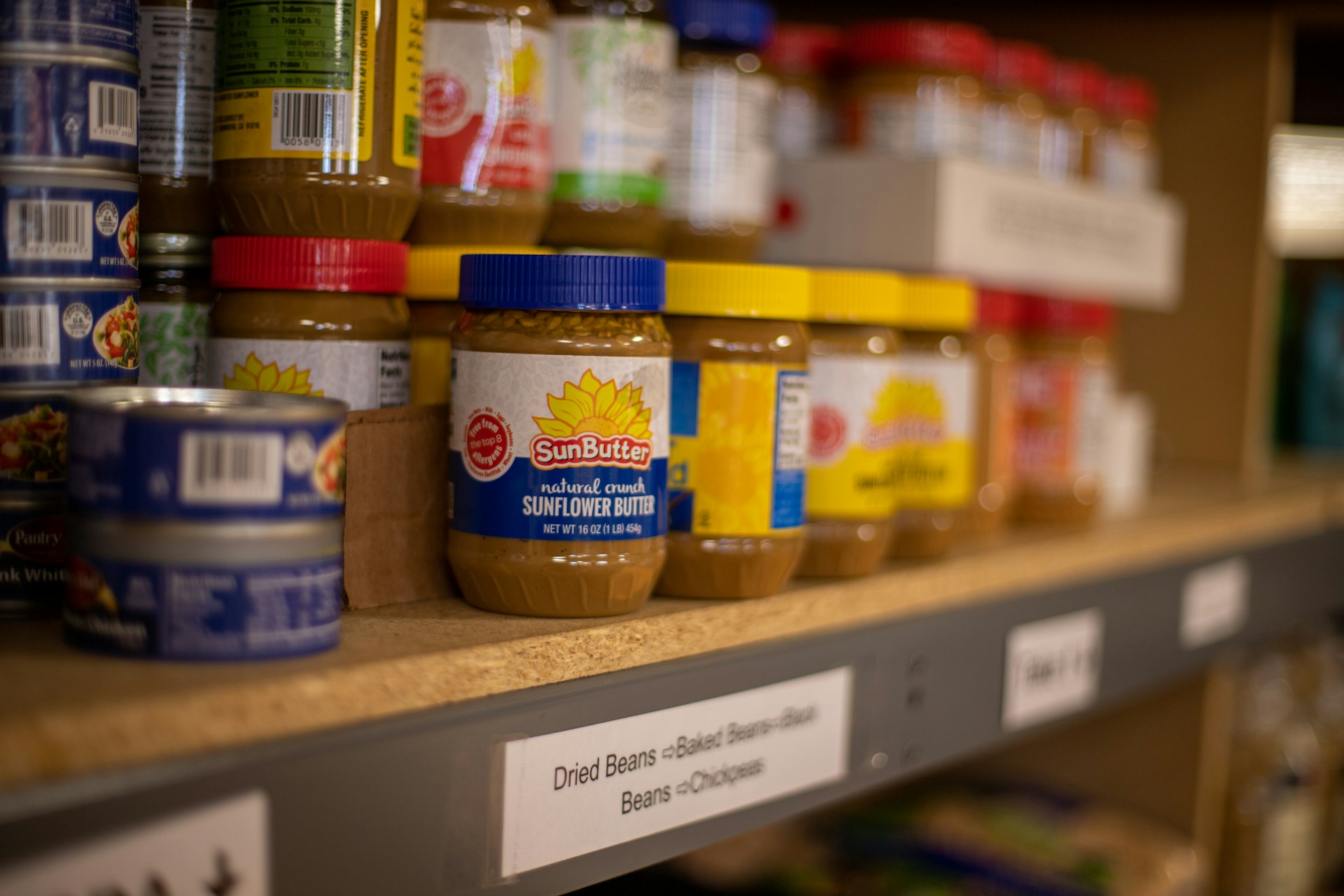Utilization of Soybean Powder and Dragon Fruit Peel Extract as Nutrient-Dense Complementary Feeding
Pemanfaatan Bubuk Kedelai dan Ekstrak Kulit Buah Naga sebagai MP-ASI Padat Gizi
Downloads
Background: Complementary feeding is given to infant aged 6-24 months. Complementary feeding can be made from several food ingredients to get products with high nutritional value. Complementary feeding product development should meet the Indonesian National Standard for Instant Powder (01-7111.1-2005).
Objectives: The purpose of this study was to determine effect of ingredient formulation on the nutritional content of complementary food and to compare with complementary feeding standard.
Methods: The research treatment was ratio of soy powder and milk powder (1:1; 5:9; 9:5). The ingredients used were soybean powder, milk powder, dragon fruit peel extract and sugar. The research design used completely randomized design (CRD). Complementary feeding nutrient analysis includes proximate analysis, vitamins and minerals. Data analysis used was ANOVA.
Results: Complementary feeding contains 2.35-2.91% of water content, 4.17-5.92% of ash content, 15.09-15.18% of fat, 15.84-20.05% of protein, 57.04-62.48 carbohydrate, 9.51-14.49% of dietary fiber, 444.123-449.85kcal/100g of energy, 27.16-34.35mg/100g of vitamin C, 181.23-267.63mg/100g of calcium, 13.93-37.66mg/100g of iron, 7.11-10.47mg/100g of zinc, and 149.93-185.80mg/100kcal of sodium and. Water content, protein, sugar, energy, vitamin C, iron are in accordance with complementary feeding standard.
Conclusions: The formulation of the ratio of soy powder and milk powder gives significant effect to ash content, protein =, carbohydrates, dietary fiber and iron content of developed complementary feeding. However, the formulation did not results a significant effect to the fat, energy, calcium, zinc and sodium levels of complementary feeding. It is necessary to reduce dietary fiber and ash content in order to fulfill complementary feeding standards.
Michaelsen, K. F., Grummer-Strawn, L. & Bégin, F. Emerging issues in complementary feeding: Global aspects. Matern Child Nutr 13, (2017).
National Institute of Health Research and Development Ministry of Health. Basic health research survey (Riset Kesehatan Dasar). (2018).
Rachmi, C. N., Agho, K. E., Li, M. & Baur, L. A. Stunting, underweight and overweight in children aged 2.0-4.9 years in Indonesia: Prevalence trends and associated risk factors. PLoS One 11, (2016).
Tunggadewi, G. & Lubis, Z. The implementation of malnutrition prevention programs in the work area of Medan Deli Public Health Center. TROPHICO: Tropical Public Health Journal Faculty of Public Health, USU 33–41 (2021).
Sumantri, E., Hidayanty, H., Gustin, D. & Handayani, S. Determinant factors of weight status among under two years children received the complementary feeding program. Gac Sanit 35, S370–S373 (2021).
World Health Organization. & UNICEF. Global strategy for infant and young child feeding. (World Health Organization, 2003).
Purnamasari, W. E. Optimasi Kadar Kalori Dalam Makanan Pendamping ASI (MP-ASI). Jurnal Pangan dan Agroindustri. 2, 19–27 (2014).
Azni, I. N. Formulasi Bahan Makanan Campuran Berbahan Dasar Kedelai, Beras Merah, Dan Pisang Kepok untuk Makanan Pendamping-ASI. Jurnal Teknologi Pangan dan Kesehatan 1, (2019).
Listyoningrum, H. Optimasi Susu Bubuk dalam Makanan Pendamping ASI (MP-ASI). 3, 1302–1312 (2015).
Kristanti, D., Herminiati, A. & Yuliantika, N. Karakteristik Fisikokimia MP-ASI Bubur Bayi Instan Berbasis Mocaf dengan Substitusi Tepung Tempe dan Susu Skim sebagai Sumber Protein. Jurnal Riset Teknologi Industri 15, 12–22 (2020).
Florence Abolaji, B., Joy Edeke, E. & Mopelola Ajoke, S. Evaluation of Chemical, Functional and Sensory Properties of Flour Blends from Sorghum, African Yam Bean and Soybean for Use as Complementary Feeding. International Journal of Food Science and Biotechnology 4, 74 (2019).
M. K. Mahmud et al. Tabel komposisi pangan Indonesia (TKPI). (PT. Gramedia Pustaka Utama, 2018).
Santoso, A. F. & Fibrianto, K. Pengaruh Ekstrak Kulit Buah Naga Merah (Hylocereus polyrhizus) Terhadap Kualitas Sosis Ayam : Tinjauan Pustaka. Ekstrak Kulit Buah Naga Merah-Santoso, dkk Jurnal Pangan dan Agroindustri vol. 5 (2017).
Santosa, B. et al. Penambahan Ekstrak Kulit Buah Naga Pada Pengembangan Produk Nata De Coco Berantioksidan. Jurnal Teknologi Pangan vol. 10 (2019).
Wahyuni, R. Pemanfaatan Kulit Buah Naga Super Merah (Hylicereus costaricensis) Sebagai Sumber Antioksidan dan Pewarna Alami Pada Pembuatan Jelly. Jurnal Teknologi Pangan 1, 68–85 (2011).
MD, M., Nusa, Mhd. I. & Prasetya, D. Aplikasi Ekstrak Kulit Buah Naga Merah (Hylocereus polyrhizus) Pada Pembuatan Susu Kedelai (Hylocereus polyrhizus). Agrintech: Jurnal Teknologi Pangan dan Hasil Pertanian 2, 5–13 (2018).
Uğur, H., Çatak, J., Mızrak, Ö. F., Çebi, N. & Yaman, M. Determination and evaluation of in vitro bioaccessibility of added vitamin C in commercially available fruit-, vegetable-, and cereal-based baby foods. Food Chem 330, (2020).
Suryana, A. L., Rosiana, N. M. & Olivia, Z. Effect of drying method on the chemical properties of local soy flour. IOP Conf Ser Earth Environ Sci 980, 012030 (2022).
AOAC. Official Method of Analysis of The Association Analitycal Chemist. (1995).
Adetola, O. Y., Onabanjo, O. O. & Stark, A. H. The search for sustainable solutions: Producing a sweet potato based complementary food rich in vitamin A, zinc and iron for infants in developing countries. Sci Afr 8, (2020).
Babu, A. K., Kumaresan, G., Raj, V. A. A. & Velraj, R. Review of leaf drying: Mechanism and influencing parameters, drying methods, nutrient preservation, and mathematical models. Renewable and Sustainable Energy Reviews 90, 536–556 (2018).
Rachmawati, N., Pontang, G. S. & Mulyasari, I. Acceptance Formulations Instant Breast From Soybean Tempeh As Breastfeeding For 6-12 Months Aged Babies. Jurnal Gizi dan Kesehatan 12, (2020).
Sukmawati, Pakhri, A. & Ismail, R. Daya Terima, Karakteristik Fisik Kimia MP-ASI Tepung Beras Merah Dan Tepung Kedelai Pencegahan Stunting. Media Gizi Pangan 26, (2019).
Romero-Velarde, E. et al. Guidelines for complementary feeding in healthy infants. Boletín Médico Del Hospital Infantil de México (English Edition) 73, 338–356 (2016).
Rosiana, N. M., Suryana, A. L. & Olivia, Z. The mixture of soybean powder and dragon fruit peel powder as high fiber functional drink. IOP Conf Ser Earth Environ Sci 411, (2020).
Mufida, L., Widyaningsih, T. D. & Maligan, J. M. Basic Principles of Complementary Feeding for Infant 6-24 Months: A Review. vol. 3 (2015).
Tamrin, R. & Pujilestari, S. Karakteristik Bubur Bayi Instan Berbahan Dasar Tepung Garut Dan Tepung Kacang Merah. Jurnal Konversi 5, 49 (2016).
Dewi, E. K. & Susila Nindya, T. Hubungan Tingkat Kecukupan Zat Besi Dan Seng Dengan Kejadian Stunting Pada Balita 6-23 Bulan. Amerta Nutr 361–368 (2017) doi:10.2473/amnt.v1i4.2017.361-368
Copyright (c) 2022 Amerta Nutrition

This work is licensed under a Creative Commons Attribution-ShareAlike 4.0 International License.
AMERTA NUTR by Unair is licensed under a Creative Commons Attribution-ShareAlike 4.0 International License.
1. The journal allows the author to hold the copyright of the article without restrictions.
2. The journal allows the author(s) to retain publishing rights without restrictions
3. The legal formal aspect of journal publication accessibility refers to Creative Commons Attribution Share-Alike (CC BY-SA).
4. The Creative Commons Attribution Share-Alike (CC BY-SA) license allows re-distribution and re-use of a licensed work on the conditions that the creator is appropriately credited and that any derivative work is made available under "the same, similar or a compatible license”. Other than the conditions mentioned above, the editorial board is not responsible for copyright violation.












































